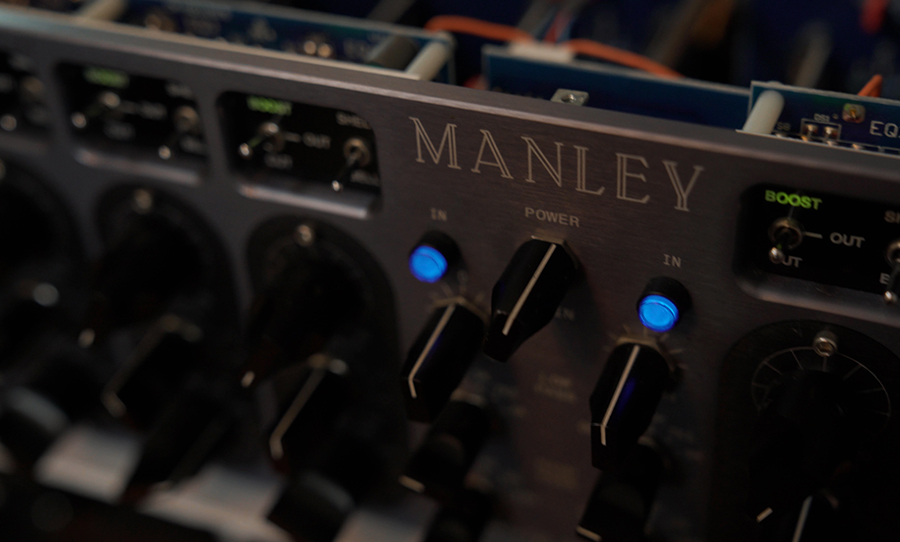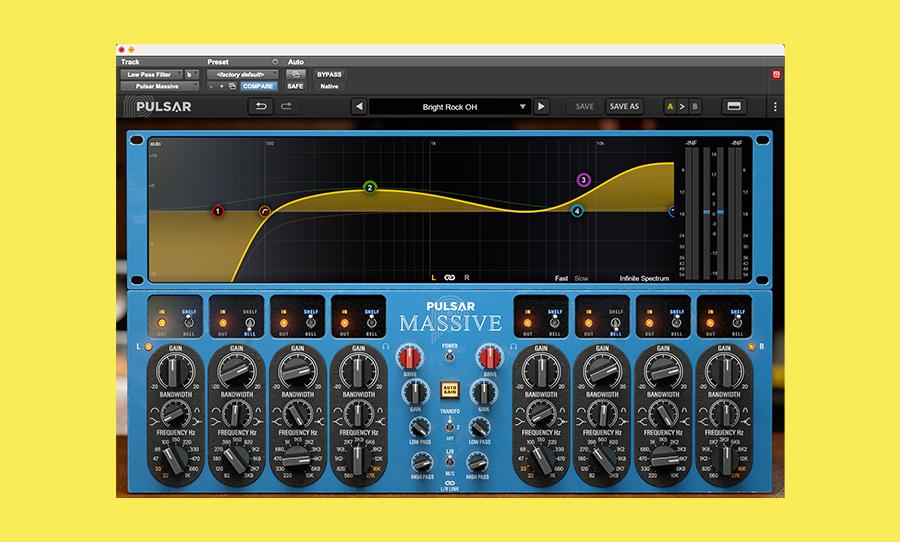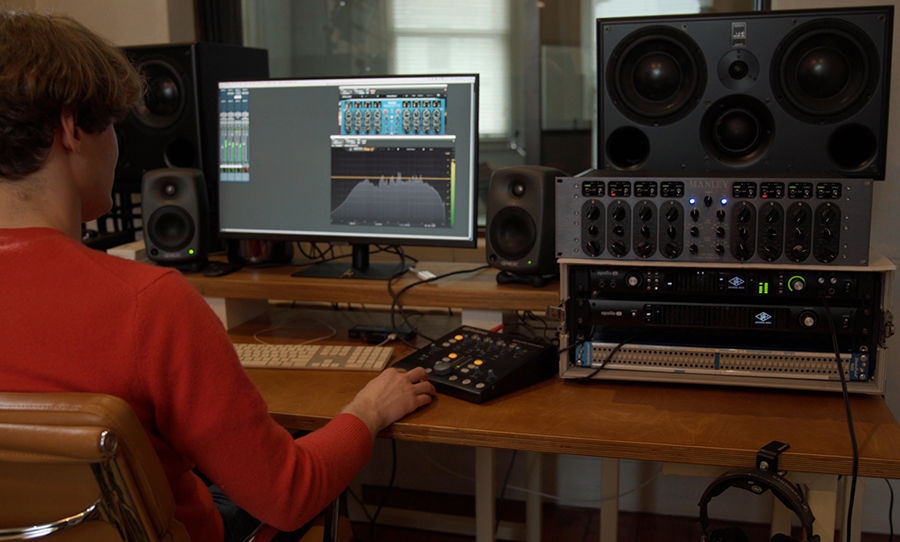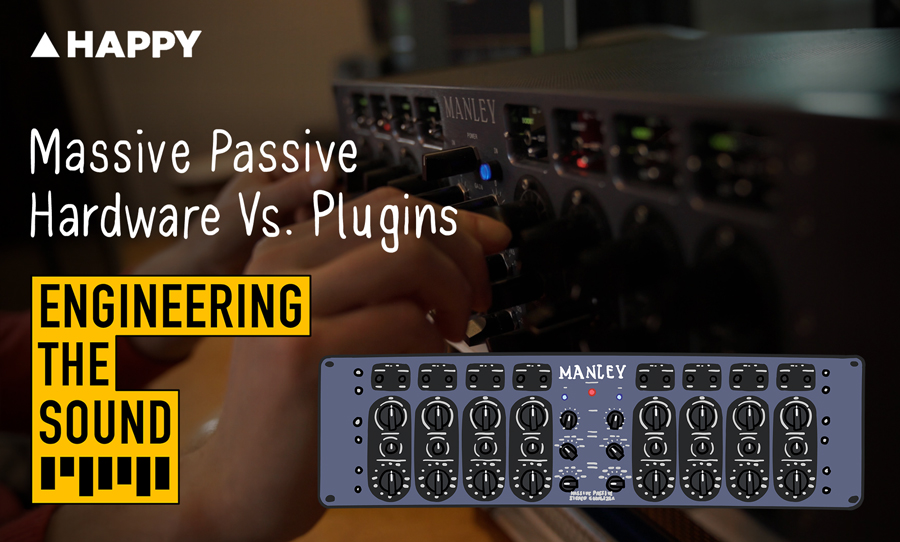EQ may seem like a straightforward world, but not all EQ units are the same, and the Manley Massive Passive itself is a particularly special one. We compared the real thing to a couple of recreations.
Deciding to shoot out an original Manley Massive Passive with the Universal Audio Digital version, and the brand-new Pulsar Audio emulation, Owen from the Happy Mag Pro Audio team took a deep and considered dive into how these plugins compared to the real deal.
The Manley Massive Passive is a $10K AUD stereo EQ with 4 different interactive bands, each with a range of selectable EQs, a bandwidth adjustor, gain boost or cut, and the option to set each frequency area as a bell or shelf. Plus High and Lo Pass filters— we used the pre-2019 version with the linear power supply. The UAD Massive Passive emulation has been around for about 12 years, and the Pulsar Audio recreation came out a couple of months back. Watch the video below to see how they all performed.
The Massive Passive gets described a whole lot as a ‘Pultec on Steroids’. I’m sure if you’re reading this you probably know what the famous 50s Pultec EQP-1A looks like and sounds like. It’s famous for its passive circuitry (meaning no ‘active’ components, just resistors, capacitors and inductors in the signal path, plus an amplifier at the end to boost the level after you’ve essentially done a whole lot of cutting to different frequency areas).
People say that a lot of the sound of the Massive Passive comes from subtle saturation from the huge transformers in the unit and the large amount of valves. The bass boosts on this EQ sound huge, and boosting way up the top, even around 27k sounds fantastic too. Cutting frequencies can easily go from subtle to fairly pointy.

One of the great things about this — besides the fact it sounds so good — is that there’s no visual representation of what you’re doing; it’s strictly an ears-only piece. The other thing is that it’s pretty hard to make these units sound bad – the curves are quite soft, even at their most extreme.
Putting this analog unit up against two digital remakes we want to see if the EQ curves look different if they sound different, and if anyone would notice or care if the real-life box was subbed out for a computer version.
When using the analog version you can use the unbalanced output that skips the output transformers as it colours the sound a little less. After asking around it seems like a pretty common way to work. It seems the UAD version doesn’t allow this option, but the Pulsar version does. We’re keeping the transformers engaged for this shootout to be inclusive for all the boxes.

Starting off by running the hardware unit over some drums Owen shows what kinda huge curves you can get, and how they actually sound across a drum kit. Something people love about analog units is the touch — the tactility of turning knobs until the sound is subjectively ‘good’ to their ears. If you want to mix with your eyes — the Pulsar Audio emulation has a built-in EQ visual graph, but you can turn it off.
The Pulsar Audio plugin has a slightly different layout to the UAD — there’s no boost and cut switch. The Pulsar also has a drive control, auto gain, and a transformer selector. The other cool thing the Pulsar does is let you choose frequencies between the actual frequencies printed on the box, whereas the hardware and UAD versions snap to specific frequencies.
Overall, they all definitely did some EQ-ing, and each definitely has the ‘3D’ depth-type effect that you expect from the Massive Passive. Owen felt the UAD had a really nice bass punch. The highs on the hardware unit — when they are pushed this hard — were definitely his favourite, although the other two weren’t so far off.

Reflecting upon the two plugins Owen remarked:
“I felt like the Pulsar didn’t quite have the sound down 100% but is still a fantastic unit, with a whole lot of extra features that go beyond the original.”
So, is it worth grabbing the hardware over the software emulations? The tactility of the hardware; the clicking of the switches and the speed at which it can be used to pull sounds, and the ‘silkiness’ of the air EQ frequencies are fantastic, plus it does sound like there is a touch more ‘depth’ in the hardware version, which is kinda hard to explain and quantify.

If you’re not using the hardware unit for work all the time it may seem a bit ridiculous to drop that kinda money when you’ve got plugins that will get you 85% of the way there.
For more info on the Manley Massive Passive head to Manley.com, for the UAD version head to uaudio.com, and for the Pulsar Audio version head to Pulsar.audio.



